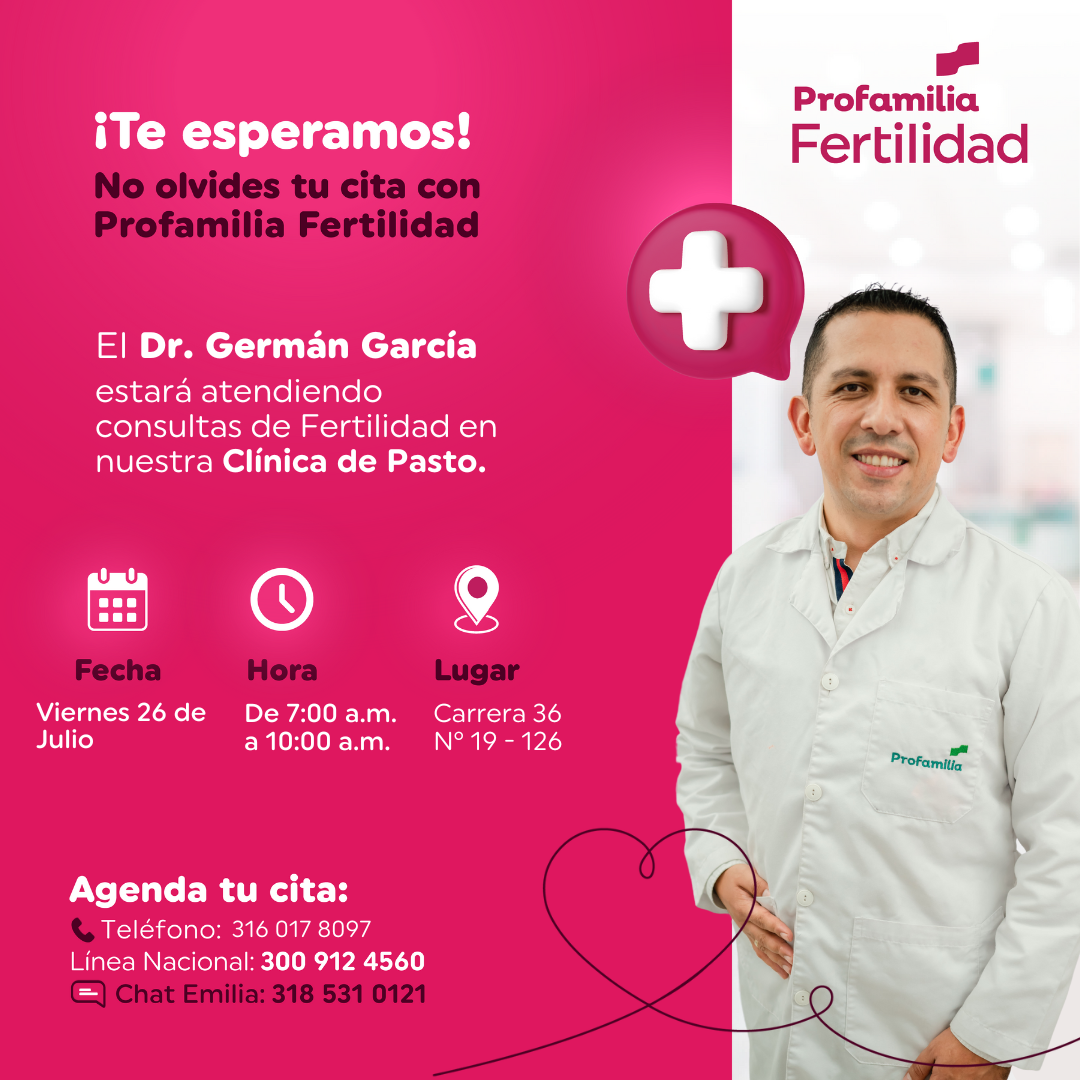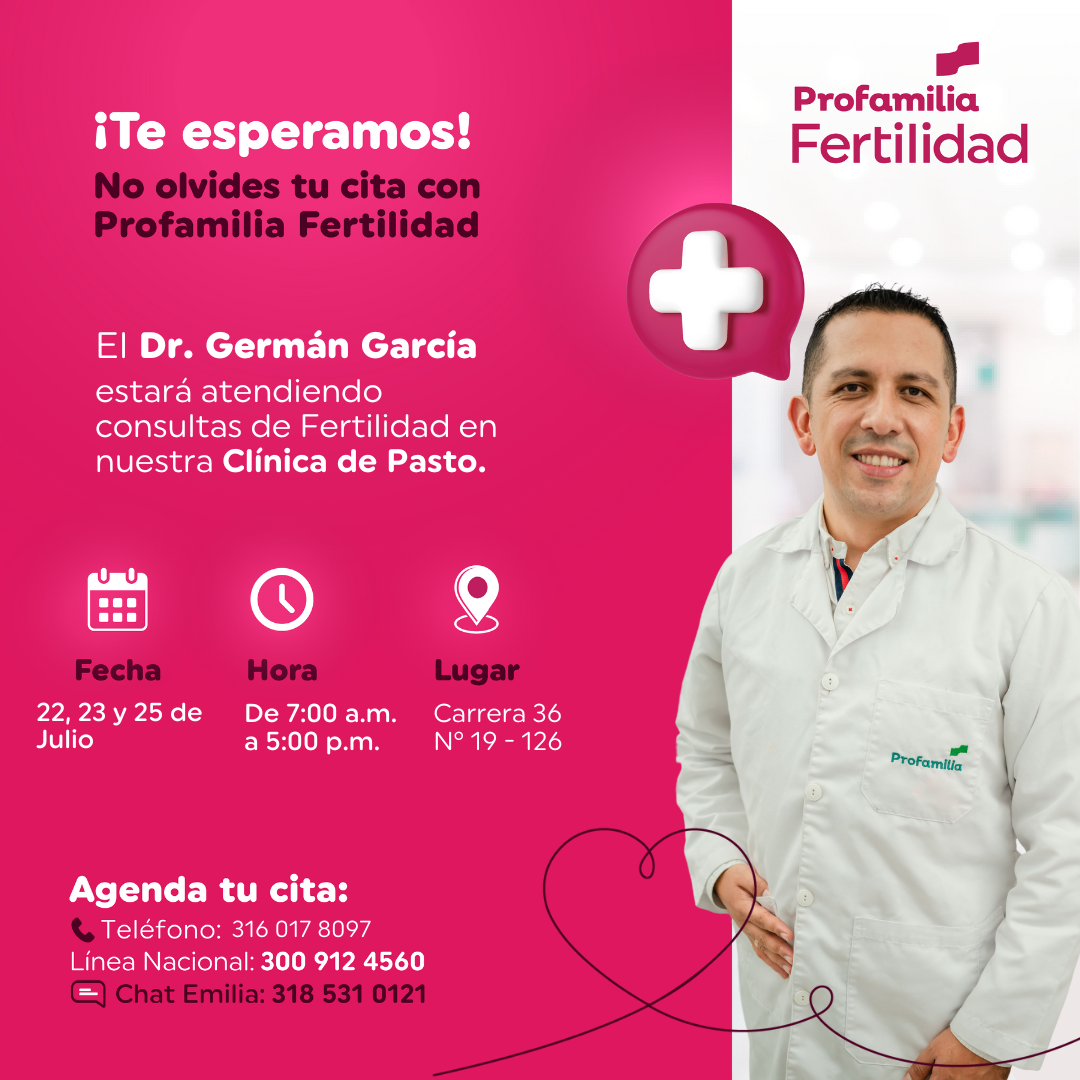Contact Us
Fill in your details and
schedule your first
appointment and spermogram
Locations
Profamilia has laboratories specialized in fertility with cutting edge technology
Click on the city to see the location on the map
Bogotá
Clínica de Fertilidad
Antiguo Country
Cl. 83 # 16a – 44 Cons. 502
Tel: (601) 484 5808
Cel: 315 607 6480
Cali
Clínica de Fertilidad
Tequendama
Cl. 7 # 41 – 34
Tel: (602) 486 2929 Ext 440
Cel: 318 795 0669
Sedes
Profamilia cuenta con laboratorios especializados en fertilidad y tecnología de punta
Somos partidarios de brindar atención única, confiable, segura y moderna, por eso, en Profamilia Fertilidad encontrarás el plus del servicio de Criopreservación:
Preservación de la fertilidad
Estas técnicas permiten congelar células germinales en hombres y mujeres. Con una supervivencia cercana al 100% y con resultados comparables a los obtenidos cuando se realizan los procedimientos en fresco. Son una alternativa para quienes desean preservar la fertilidad de forma electiva o para quienes por causas médicas o profesionales deben preservar su fertilidad para así lograr su sueño de ser padres.
Banco de semen y óvulos
Contamos con un banco de semen y óvulos donados. Nuestro banco selecciona de forma muy rigurosa y con los más altos estándares de calidad a donantes de gametos (óvulos y espermatozoides) para ofrecer a nuestros pacientes confianza y tranquilidad en sus tratamientos.
Bogotá
Unidad de Fertilidad
Antiguo Country
Cl. 83 # 16a – 44 Cons. 502
Tel: (601) 518 8666 – 315 607 6480
Cali
Unidad de Fertilidad
Tequendama
Cl. 7 # 41 – 34 Tel: (602) 486 2929
Ext 440 – 318 795 0669


